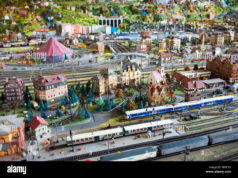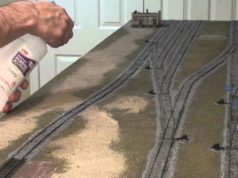This is a great question, and one that is going to be tough to answer. This question is almost like the question of “Coke or Pepsi”, “Mac or PC.” Again, it’s almost like these questions, but not quite the same. Coke or Pepsi, Mac or PC come down to a personal choice, one really isn’t any better than the other. In both comparisons, they are both good at what they are made to do.
Plastic and metal model train wheels are the same way in this aspect. If you have good quality metal or plastic wheels, they will perform the job of carrying your cars around your layout without any problems. But the problem, and hence the question, comes not from the performance of the wheels, but actually from what results from using said wheels.
Before I get started, I want to point out that there are model railroaders that swear by both metal and plastic wheels. But I want to present my case by being objective, and show my theory for why I chose the type of wheel I recommend.
The Problem:
If you are starting out in the model railroad hobby, you’ll learn something here, and if you have been a model railroader for awhile, you already know this. As you run your train, over time “gunk” (a type of black stuff) is going to build up on your wheel s and tracks. This is natural, and unfortunately unavoidable. This gunk comes from a combination of the humidity and the amount of dust/dirt in the room. It is good practice that after working on scenery, or doing something on your layout that may kick up or cause a lot of dust, to clean your tracks before running your train again. If you don’t, the gunk will get on your wheels, and could get into your locomotive and start causing problems. It also limits the amount of electric conduction from the rails to the wheels. That’s why important to clean the tracks and your wheels on a regular basis.
The Verdict:
So, now that I’ve discussed the problem everyone faces, let’s continue on to the question at hand: “Plastic or Metal?” I chose and recommend metal wheels over plastic. I know will get comment of praise and hate for my decision, but here’s why. We all have to deal with the gunk, and have to maintain a clean track. Through my research, and from reading experiments other people have done, I’ve found with using metal wheels, you don’t have to clean it as often. And in my book, that makes it a better choice. The reason I believe is that metal wheels are conductive, and plastic ones are not. The plastic wheels can build up static electricity which can attract dust particles and therefore cause it to form more gunk.
The Conclusion:
I want to be clear, however, that there are a lot of factors at play. The amount of humidity and dust play a major role as mentioned before, but also the type of track you are using is also a factor. There are differences between nickel silver, zinc, and brass tracks. These are all factors that could negate the benefit of having metal wheels. If you have a lot of rolling stock, I definitely don’t recommend going out and buying metal wheels for all your cars. But if you are just starting out, and you only have a couple of cars that came from a train set, then I would suggest that if you are going to continue in the hobby to buy cars that have metal wheels.






